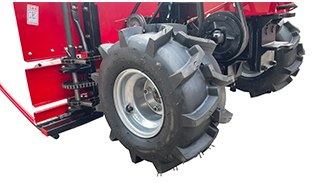Oct . 18, 2024 02:54 Back to list
Effective Methods for Cleaning Brake Drums and Shoes for Optimal Performance
How to Clean Brake Drums and Shoes
Maintaining your vehicle's braking system is crucial for safe driving. Brake drums and shoes are integral components of drum brake systems, and keeping them clean will ensure they function effectively. This article will guide you through the process of cleaning brake drums and shoes safely and efficiently.
Safety First
Before starting any auto maintenance, safety should always be your priority. Begin by ensuring your vehicle is parked on a flat surface and is properly secured with wheel chocks. Disconnect the battery to prevent any electrical accidents. Make sure you have the necessary tools on hand a jack, jack stands, a lug wrench, a brake cleaner, and suitable gloves and eye protection for safety.
Step 1 Remove the Wheel
After taking the safety precautions, use the lug wrench to loosen the lug nuts of the wheel where you will be working on the brakes. Once loose, lift the car with a jack and secure it with jack stands. Once the car is secure, remove the lug nuts completely and take off the wheel to expose the brake drum.
Step 2 Inspect the Brake Components
Before cleaning, take the time to visually inspect the brake shoes and drum for any signs of wear or damage. Look for cracks or excessive wear on the shoes and drum surface. If you find any significant damage, it may be time to replace these components instead of just cleaning them.
Step 3 Remove the Brake Drum
If the brake drum is stuck in place, you may need to tap it gently with a rubber mallet to loosen it. Once it’s free, slide it off the wheel hub. Be cautious as brake dust can be hazardous to your health; a high concentration of fine particles can cause respiratory issues.
how to clean brake drums and shoes

Step 4 Clean the Brake Drum
Using brake cleaner, spray the inside of the drum thoroughly. The cleaner will help break down any accumulated brake dust, oil, or grime. Allow the cleaner to sit for a few minutes. Afterward, use a soft brush or cloth to scrub the surface to ensure all contaminants are removed. Once clean, wipe down any excess cleaner with a clean rag.
Step 5 Clean the Brake Shoes
Next, focus on the brake shoes. Use light sprays of brake cleaner to clean the friction material on the shoes. Be careful not to oversaturate them. Since the material is designed to wear down, excessive cleaning can strip away essential fibers. If you observe any significant buildup or debris, gently scrape it off with a plastic scraper or a soft brush.
Step 6 Reassemble the Drum and Wheel
Once you’ve cleaned both the drum and shoes, inspect the area around the wheel hub for dirt and debris, and clean it if necessary. Reinstall the brake drum onto the wheel hub, ensuring a snug fit. Replace the wheel, and carefully screw on the lug nuts by hand first before tightening them in a crisscross pattern with the lug wrench.
Step 7 Final Checks and Test Drive
Before lowering your vehicle, recheck that everything is secured correctly. Once everything is verified, remove the jack stands and lower your vehicle. Reconnect the battery, and then take your car for a short test drive to ensure the brakes are functioning properly. Listen for any unusual noises which could indicate that further adjustments or replacements are necessary.
Conclusion
Cleaning your brake drums and shoes is an essential part of vehicle maintenance that can prolong the life of your brakes and improve stopping performance. Regular inspection and cleaning can prevent more serious issues down the line, thus ensuring safer driving. Always refer to your vehicle's service manual for specific instructions and recommendations. If you are unsure about any step, consulting a professional mechanic is advised.
-
Your Brake Drum Man: Premium & Reliable Brake Drums for Sale
NewsAug.18,2025
-
ROR Web Development: Build Fast, Scalable, Secure Apps
NewsAug.17,2025
-
Scania Brake Drums: OEM Quality for Optimal Safety & Durability
NewsAug.16,2025
-
R.V.I: Advanced Remote Visual Inspection for Precision
NewsAug.15,2025
-
Discover HYUNDA: Innovative Vehicles, Equipment & Solutions
NewsAug.14,2025
-
R.V.I: Unlock Advanced Insights & Real-time Performance
NewsAug.13,2025
